Disclaimer: This post contains affiliate links to handpicked partners, including tours, gear and booking sites. If you click through or buy something via one of them, I may receive a small commission. This is at no extra cost to you and allows this site to keep running.
Street art in Athens is the biggest collection in the world, comprised of social and political messages of recent strife. Here’s where to find it.
You can’t help but notice the excessive amount of graffiti that coats every available surface throughout Athens, where every available wall, shop front, brick wall or obscure alley is a canvas waiting to be filled with artistic optimism, political reference or social satire.
While it can project an immediate visual grittiness that many find unappealing upon their first visit to Athens, dashing any attempts to unearth the city’s true persona, it does give it a unique edge. Used as an open canvas from which to convey a multitude of messages, Athens street art is no exception to the rule.
Ignore the ugly ‘tagging’ that litters some walls – a mere attention cry amongst those wanting their name on something. The more intricate designs and messages found mainly within the Exarchia, Monastiraki and Psirri neighbourhoods (and side by side with the city’s archaeological treasures) are detailed and impressive, with many artists having carved out a career and a reputable name for themselves.
Much like Manolis Iliopoulos, a local artist I got to hang out with through Dopios, an online resource that links up visitors with local people wanting to show off their city. Manolis explains the history of the graffiti and street art movement in Athens, shows you how to look out for the tags of some of the top artists, and takes you to the city’s artistic hangouts including studios and a cool spray paint shop – things you would never find during your own exploration.
The general view is that the graffiti movement began in New York as a reaction to the economic crisis, spreading throughout the world and arriving in Athens around 1992 where artistic murals first began appearing in the outlying neighbourhoods before moving to the centre.
READ MORE: The Best Neighbourhoods of Athens Beyond the Ancient Sites
Owing to a period of unemployment and the economic crisis that put Greece on the brink of bankruptcy, Athens took on the bulk of extreme monetary reforms, which often resulted in violent protests, reflective of the national outcry. With this, the Athens street art scene exploded, with protests taking hold through the reclaiming of public space.
“Greece has a problem with public space,” says Manolis. “It essentially belongs to no one.”
Here, it belongs to collective expression, and while some struggle and loose in the fight to general tagging, many shop keepers, business owners and commercial property investors now ask the artists to come and paint their walls.
However, what we did learn is that while street art in Athens predates its most recent crisis, it has always existed in Greece. The word graffiti actually comes from the Greek word graphi, meaning ‘to write’. Inscriptions and messages have been carved and embedded into buildings for centuries – an ancient art of communication.
So while modern Athens will never be without its vital element of street-side character, it has always been ahead of the game – at the core of a country where philosophy and democracy were invented, it seems to also have kickstarted a worldwide artistic movement of great expression.

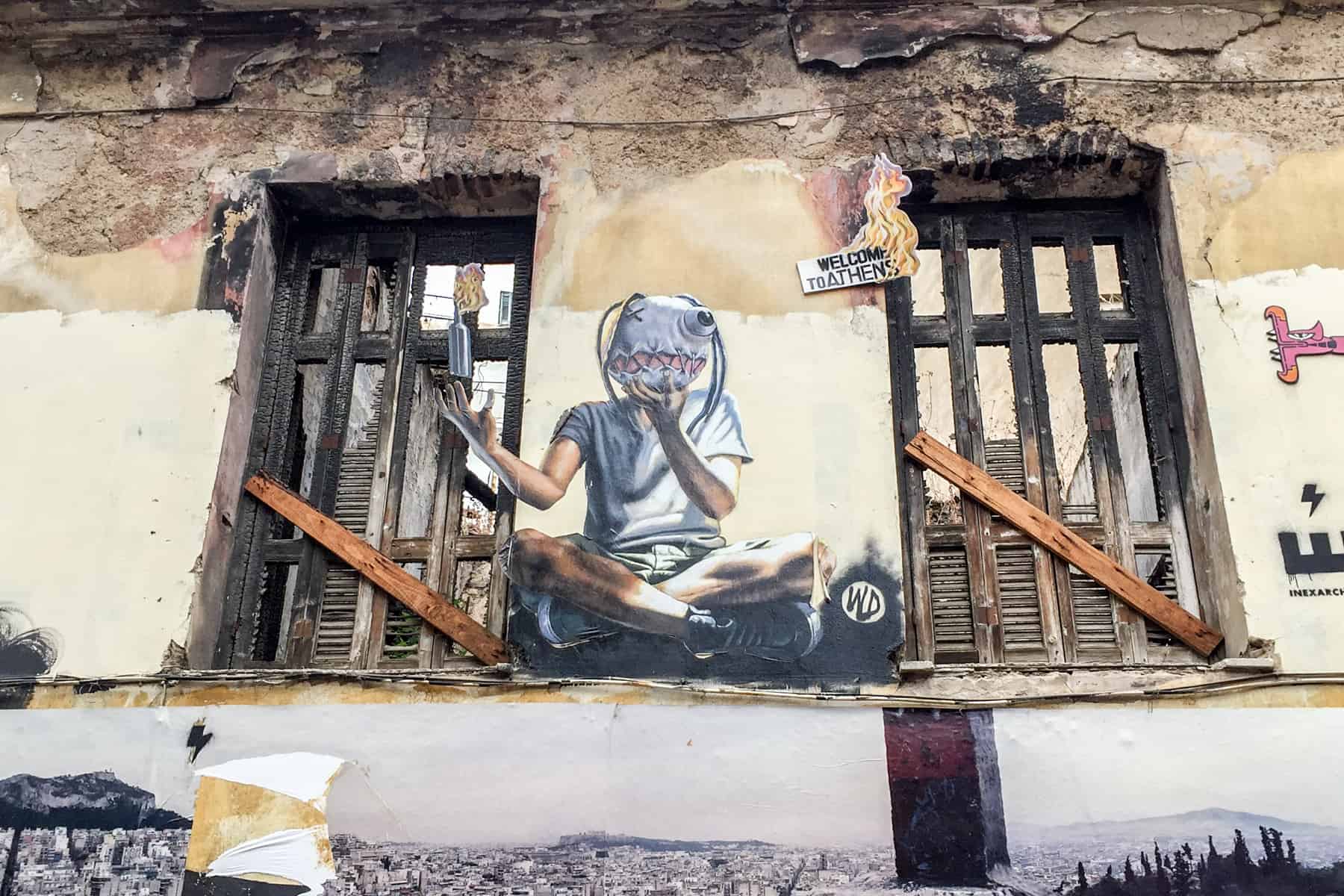
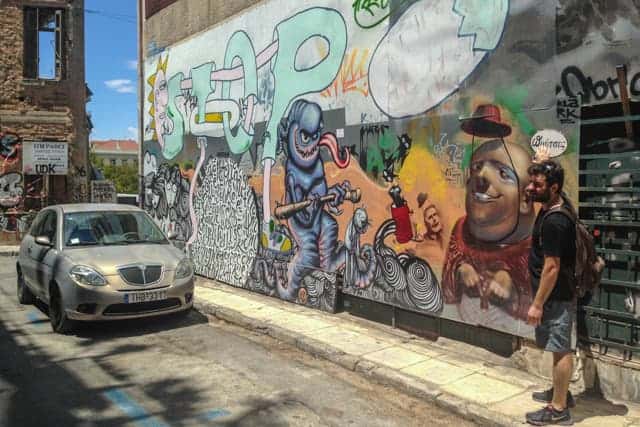
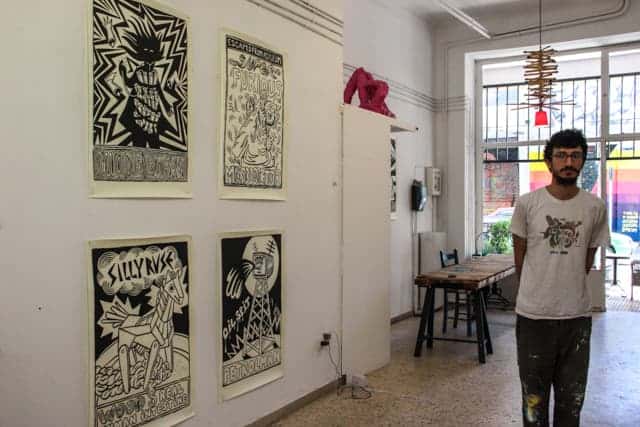
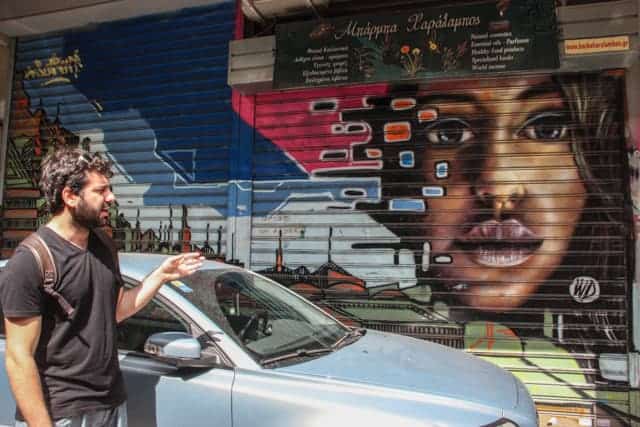
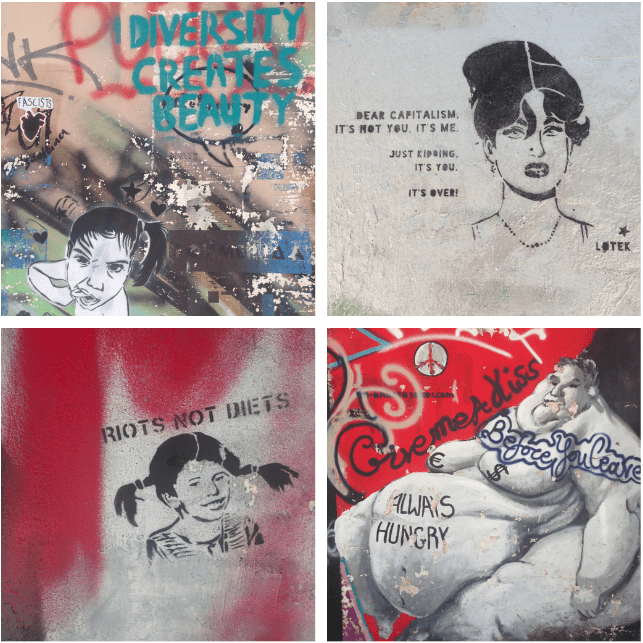
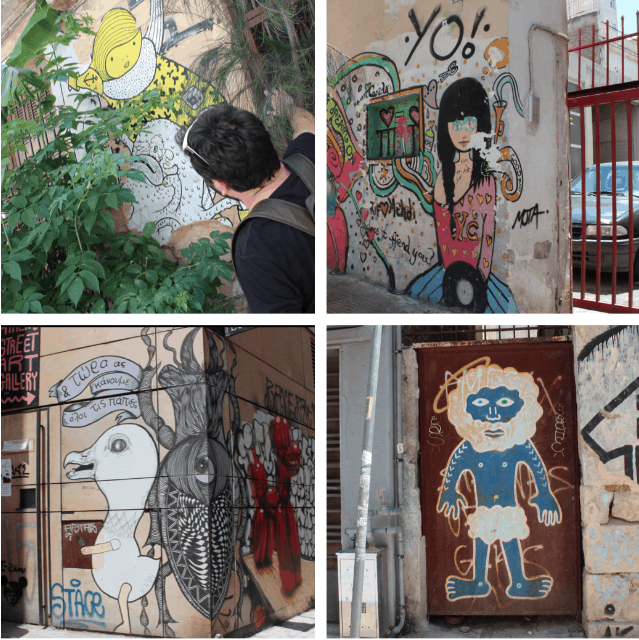
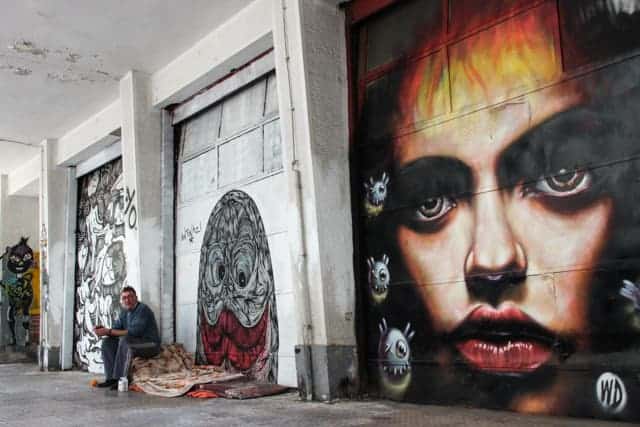
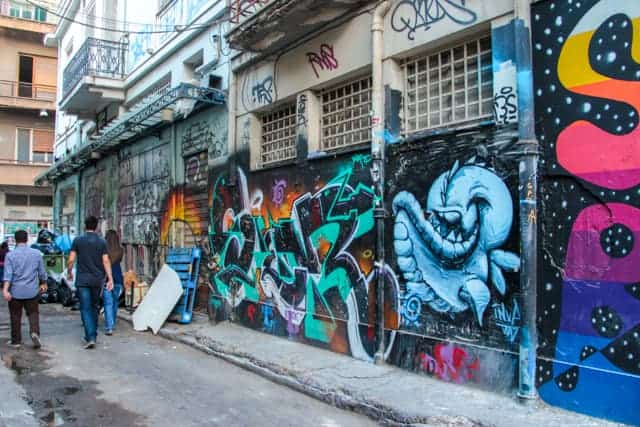
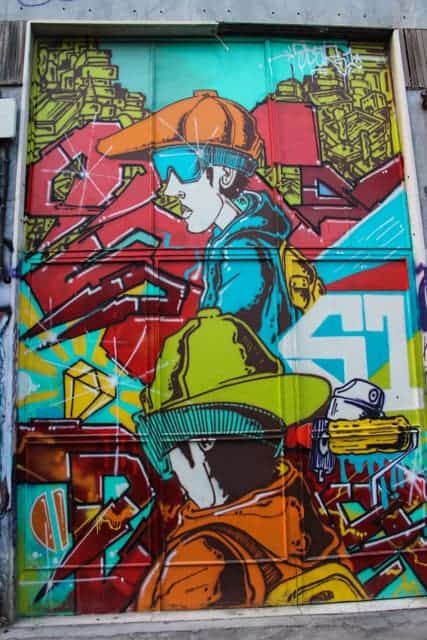
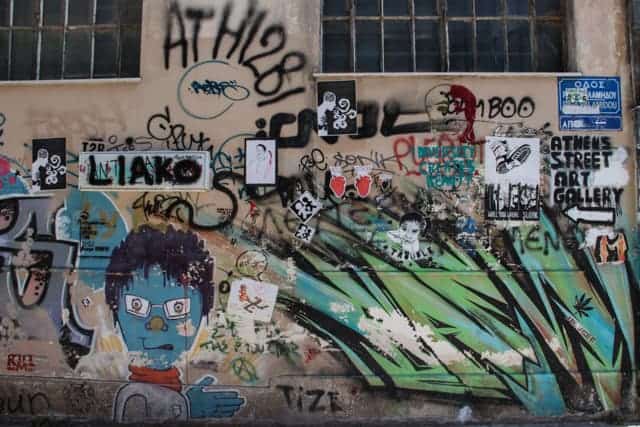
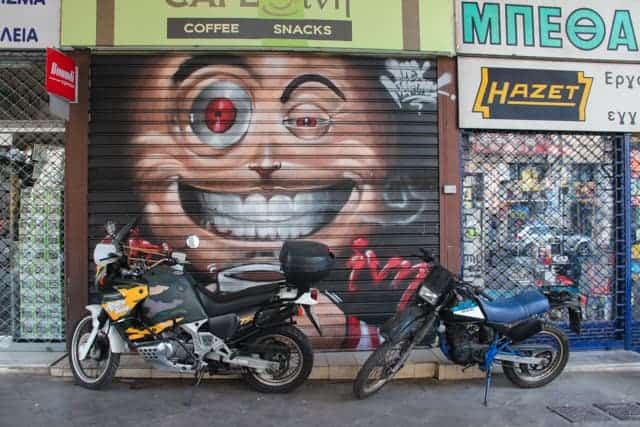
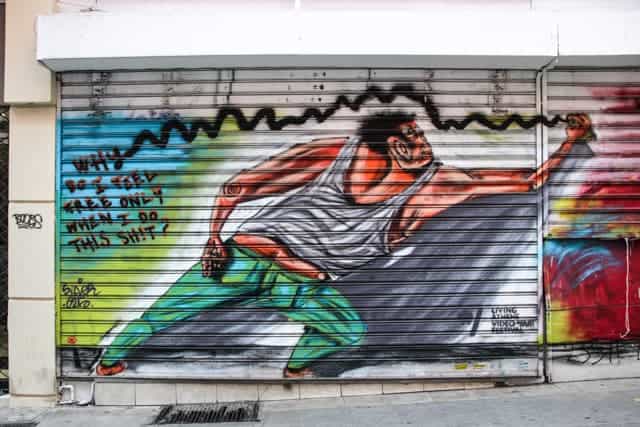
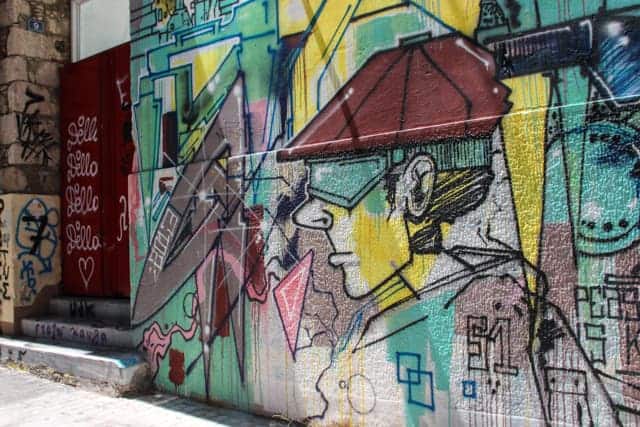
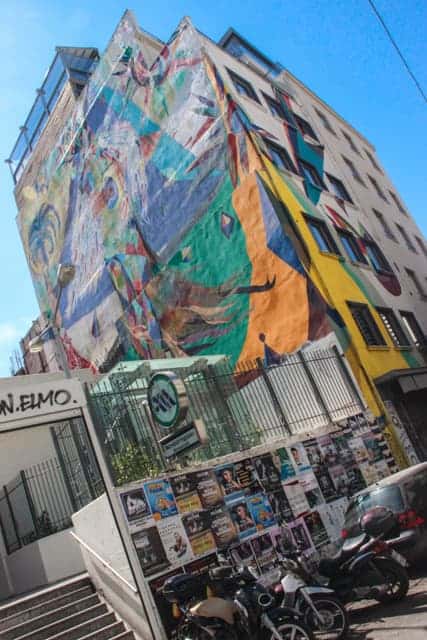
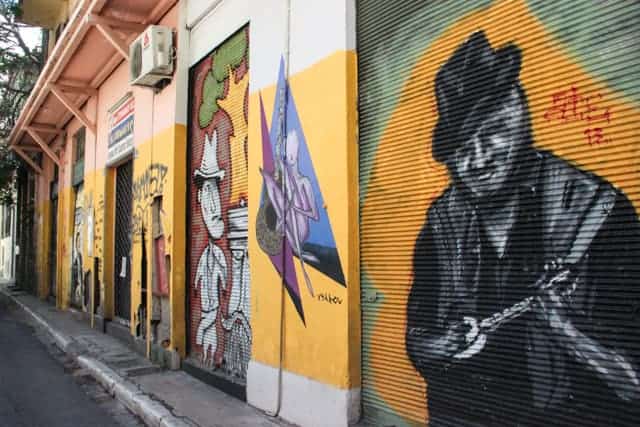
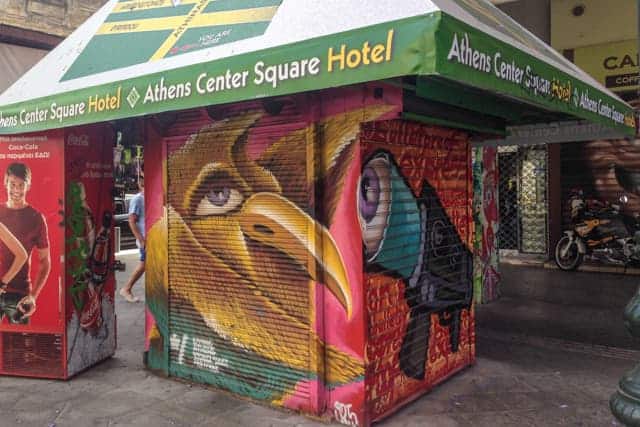
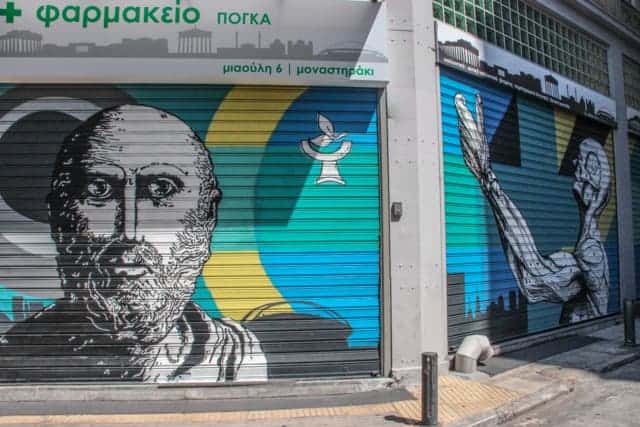
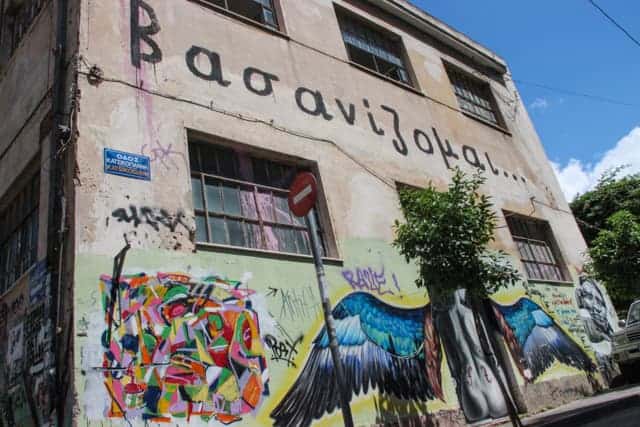

angela says
Def recommend as a street art lover myself!
Maria says
It is absolutely beautiful. I recently visited Athens and I couldn’t take my eyes off all the beautiful art all over the streets. I took so many photos, I could’ve walked all day looking at it. I’m using it as my new concept idea in my upcoming fashion design collection.
BeBe says
I feel that true art has its place to be recognized. However, I was very disappointed to see vulgar words painted on public buildings, which in my view is a sign of disrespect for others. In addition, a true artist would not appreciate someone destroying their work, property,or someone painting over their art. Why not get permission to create a meaningful mural on a wall in a University cafeteria, or a place on a wall in the city where the art can be appreciated. I was disappointed as we drove through Athens and saw how horrible the city looked and people not taking pride in their community to keep it beautiful. Artist Associations and organize groups can work together to stop out-of-control graffiti and encourage artists to seek places where their art is recognized and appreciated. Encourage artists to work with public officials to keep the cities beautiful with meaningful art and talent.
Jorge Sotirios says
Graffiti in abundance 🙂
Franca says
I’m a huge street art fan and I’m always on the look for some new one to discover, I’m not sure why and how I haven’t been to Athens yet considering it’s a paradise for street art lovers. It’s definitely a place I’d love to go now 🙂